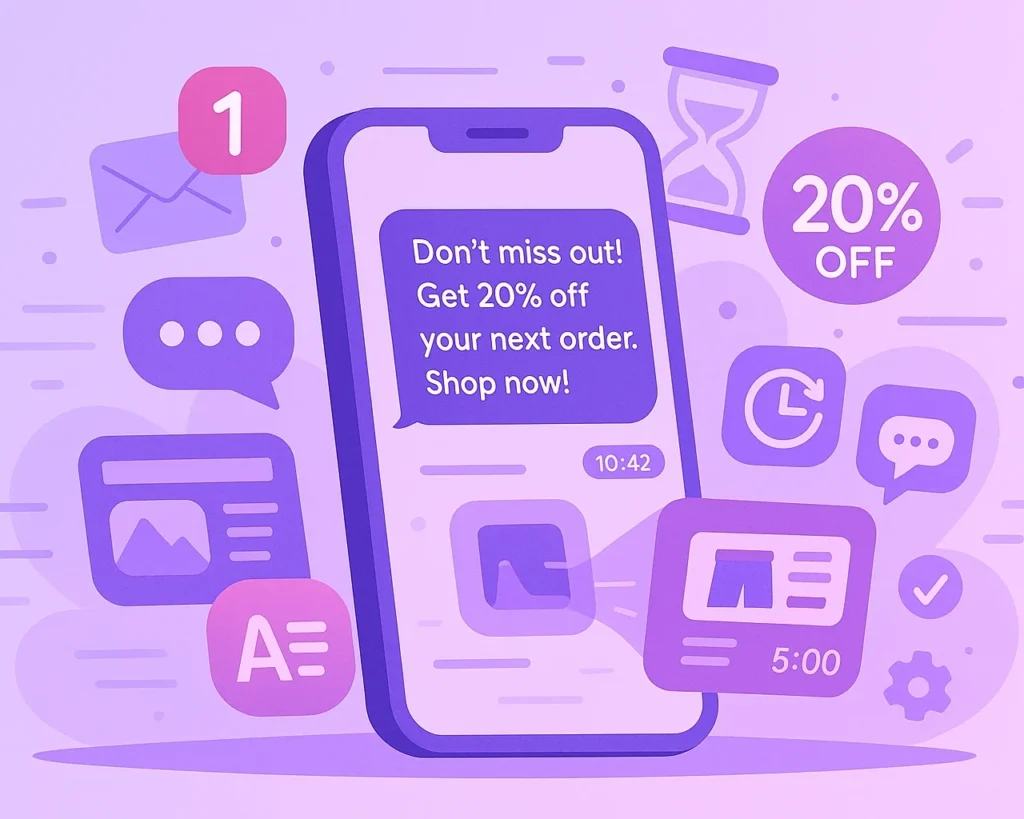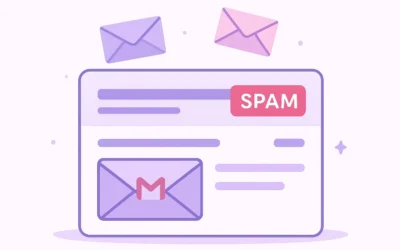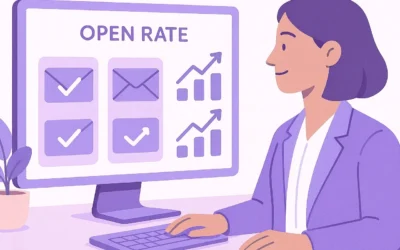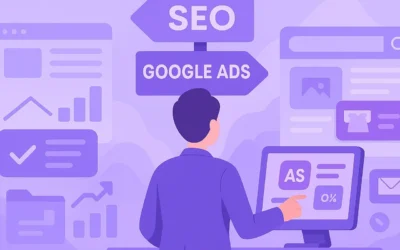In a world where notifications never stop, choosing between email marketing and SMS marketing can make a huge difference in your results. Both channels are powerful, but each shines in different contexts. Which one should you use? And when? In this guide, we break it all down with clarity, strategy… and no fluff.
Email marketing and how it works
Email marketing consists of sending emails to a database with the goal of informing, persuading, or nurturing. It has proven its effectiveness over time, especially due to its low cost and high level of personalization.
One of its greatest advantages is that it allows you to build long-term relationships, especially if you integrate automations tailored to your business type. If you’re looking for a more efficient way to connect with your customers, check out our email marketing service.
With platforms like Mailchimp, ActiveCampaign, or Klaviyo, you can:
- Create automated workflows based on user behavior
- Send personalized and segmented content
- Measure open rates, clicks, conversions, and more
SMS marketing and why it still matters
While many thought SMS was dead, the reality is different: SMS marketing is still one of the channels with the highest open rates.
It’s simple: you send short text messages (with a character limit) directly to the user’s phone. It is commonly used for:
- Appointment or order confirmations
- Flash promotions or discount codes
- Important reminders
- Urgent alerts
This channel is especially useful in contexts where immediacy is key. And although it doesn’t allow as much personalization as email, its impact is immediate and direct.
Differences between email marketing and SMS marketing
Although both channels share the same goal (communicating with your audience), their characteristics make them ideal for different moments and objectives.
REACH AND OPEN RATES
Email usually has an average open rate of 20–25%, while SMS reaches 90% or more. This doesn’t mean SMS is “better,” but it does have an advantage in terms of immediate visibility.
COSTS AND BUDGET
Email marketing is very low-cost, especially for mass campaigns. SMS marketing tends to have a higher cost per message, particularly for frequent campaigns. So if you’re looking for mass reach at low cost, email is more efficient.
PERSONALIZATION AND AUTOMATION
Email allows you to segment audiences, personalize content, and apply advanced automation with artificial intelligence, making it a key tool in any SEO-driven content strategy. When combined with automated workflows and technology, it also allows for more efficient and scalable campaigns, as in the case of AI-powered marketing automation. SMS, on the other hand, is more limited due to its format: you can personalize with the recipient’s name, but little else, reducing its adaptability to different audiences.
ENGAGEMENT AND RESPONSES
Emails allow you to include links, calls to action, images, and even videos. SMS is limited in format, but its brevity often generates faster reactions.
When to use email marketing and when to use SMS marketing
One of the most common mistakes is thinking you must choose one or the other. The real key is knowing when it’s more appropriate to use email or SMS, depending on context, audience, and the type of message you want to send. Here’s how to decide strategically.
By business type (B2B vs B2C)
In B2B (business to business) models, where decisions are more rational and based on detailed information, email marketing offers more opportunities to educate, nurture, and build trust.
In B2C (business to consumer), especially in ecommerce or retail, SMS stands out for its ability to generate an immediate reaction. A discount code sent via SMS often converts much better than email in flash campaigns.
By message type (urgent, informative, promotional)
The nature of the message defines the ideal channel. If you need to communicate something urgent or high priority (such as last-minute changes, alerts, or reminders), SMS is far more effective.
If your message requires context, details, or links to more elaborate content, email gives you the necessary space to deliver it properly.
By funnel stage
In the awareness stage, email works very well to build trust, educate, and keep the lead engaged with newsletters or sequences.
In the decision stage, SMS can help you close the sale with reminders, exclusive promotions, or stock alerts. You can also integrate it with optimized landing pages to capture conversions more effectively.
Pros and cons of each channel
Both channels have strengths and weaknesses. Here’s the full breakdown.
Pros and cons of email marketing
Advantages:
- Very low cost per send
- High personalization and segmentation
- Great for automation
- Excellent for content strategies
- Supports design, branding, and CTAs
Disadvantages:
- Lower open rates
- Can end up in the spam folder
- Channel saturation in some industries

Pros and cons of SMS marketing
Advantages:
- Extremely high open rates
- Instant message delivery
- Great for urgent or time-sensitive promotions
- High response rates in certain industries
Disadvantages:
- Higher cost per send
- Character and format limitations
- Not ideal for long or complex messages

Here’s a comparison table that sums up their most important differences:
| Feature | Email Marketing | SMS Marketing |
|---|---|---|
| Average open rate | 20–25% | 90%+ |
| Campaign cost | Low | Medium / High |
| Personalization | High (segmentation, automation) | Limited (name, short message) |
| Delivery speed | Fast (minutes) | Instant (seconds) |
| Allowed content | Text, images, links, HTML | Text only (short and direct) |
| Best for | Newsletters, funnels, long content | Alerts, reminders, flash offers |
How to combine email and SMS in an integrated strategy
The best strategy is not always to choose between email or SMS… but to combine both channels intelligently to maximize impact at every point in the customer journey. Each channel has its own strengths: email allows you to build long-term relationships with more elaborate content, while SMS stands out for its immediacy and effectiveness at key moments. Integrating both into a well-orchestrated automation strategy helps deliver the right message, in the right channel, at the right time, improving both engagement and conversions.
Multichannel automation
Imagine this: a user abandons their cart. You send them an email 30 minutes later. If they don’t open it within an hour, they receive an SMS with a 10% discount. When they click on the SMS, they land on an optimized page to complete the purchase.
Synchronization with remarketing and content
Both channels can also support other strategies such as Google Ads remarketing or SEO-driven content strategies. Combining them with valuable content can significantly increase your conversion rate.
FAQs about email and SMS marketing
Which has better ROI, email or SMS?
It depends on the goal and type of business. On average, email marketing offers higher ROI thanks to low cost and automation. However, SMS can outperform in conversion for urgent promotions or highly specific campaigns.
Is it legal to send promotional SMS?
Yes, as long as you have the user’s explicit consent. Both email and SMS marketing must comply with regulations like GDPR or local privacy laws to avoid penalties and protect user data.
Do I need a specific tool for SMS marketing?
Yes, to run SMS marketing campaigns professionally and at scale, you need a specialized platform. These tools let you manage bulk sends, schedule messages, personalize fields like the recipient’s name, and ensure compliance with opt-in and opt-out rules.
Some of the most popular platforms include Twilio, Klaviyo, Sendinblue, or SMSAPI, many of which also integrate with email marketing and CRM. Using the right tool not only improves efficiency but also gives you access to key metrics like delivery rate, clicks, and responses.
How many SMS or emails should I send per week?
It depends on your audience, sector, and type of message. As a general rule:
- Email: 1 to 3 sends per week is optimal for most industries.
- SMS: ideally 1 to 2 per week, only for important campaigns or urgent messages, to avoid overwhelming the user.
Conclusion: which is better for your digital strategy?
It’s not about which one is “better,” but about which is most appropriate for your goal at each moment.
Use email marketing to build relationships, educate, automate, and maintain a constant presence. Use SMS marketing to create urgency, drive quick responses, and stand out from the noise.
_____________________
What do you think? Have you achieved better results with email marketing or SMS? Do you use them separately or combined?
We’d love to hear your experience or questions in the comments. 💬 Your input makes the conversation richer!



0 Comments